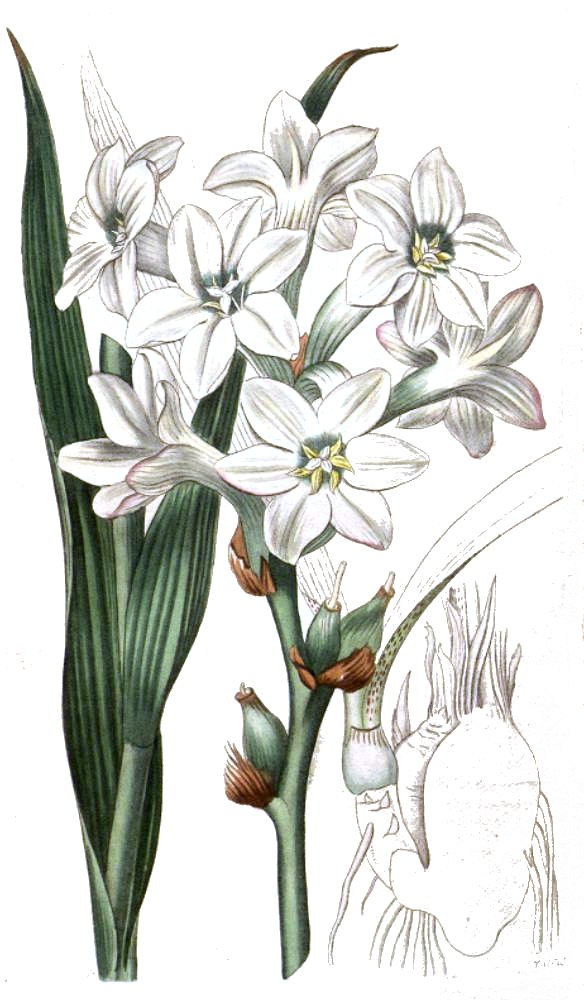Picture: A great Passionflower
Photo: Simon Rudolf (cc)
Wikimedia Commons, some rights reserved
Scroll down for an english version. This is from the unpublished archives, ca 2011.
Håll i er alla parfymsnobbar: MPG:s
Fraiche Passiflore är något så hemskt som en fruity-floral! Men en hemskt trevlig fruity-floral och inte alls en sådan där generisk, klonad, massmarknadsprodukt som man normalt associerar med begreppet. Nej, Jean Laportes passionfruktsblommedoft med jasmin och persika har en helt annan klass. Det finns ju faktiskt fruktiga floraler som är jättebra, både bland niche och i designerdoftssortimentet. Frukt ihop med blomma blir precis lika bra ihop som tillexempel gräs och blomma bara parfymören komponerar med känsla och bra ingredienser används.
Så är fallet i Fraiche Passiflore som även om den inte tillhör MPG:s mer avancerade dofter i sin relativa enkelhet är riktigt originell, uppiggande och ger en viss spänning trots att den har rätt lite av den så för äldre MPG:s i bakgrunden lurande "skankynessen". Fraiche Passiflore inleds med en massiv dos persika och passionsfrukt. I det här stadiet är den nästan lite för söt men det går över när den MPG-gröna jasminen inträder och balanserar upp det hela. I den här fasen påminner passionsfruktnoten mycket om dito i Vero Kerns Edp-versionerna av
Rubj,
Kiki och
Onda. Dessa tre dofter har genom adderandet av passionsnoten fått en gemensam aura som påminner om utstrålningen i Fraiche Passiflore. Även MPG:s egna fina
Rose Muskissime har en mindre dos av passionsblomman, en not som uppenbarligen borde användas mer med hänsyn till de godingar till dofter som jag precis räknat upp. I FP:s notlista finns också spansk peppar, en not som jag inte känner direkt men säkert tar ut en del av sötman för i mellanregistret har FP stramat till sig. Sedan fortsätter den i samma stil ned i basen där den MPG typsiska lortmysken lurar men här i en ganska tvättad version. Dessutom finns en kittig not i basen. I basen påminner FP så otroligt om en doft som jag upplevt som liten, någons parfym eller någon hudcreme. Om FP skulle ges en färg så är den definitivt starkt orange för mig och den utstrålar glädje och värme.
Fraiche Passiflore är den perfekta, eleganta, fruity-floralen och den är som gjuten för cocktails ljumma sommarkvällar. Men den passar också för att pigga upp om vintern, faktum är att jag bar den ett par dagar före julafton, bland annat på årets mörkaste dag. Kanske en omedveten manifestation av att "nu vänder det". Men eftersom baksidan med FP är att den har en sämre hållbarhet under dagen än de flesta andra av mig testade MPG:s så passar den bättre på vintern eftersom dofterna inte radierar lika snabbt från bäraren i kyla som i värme.
Hold on all perfumesnobs: MPG's Fraiche Passiflore is something as awful as a fruity-floral! But a terribly nice fruity-floral, not one of those generic, cloned, mass-market products that's generally is associated with the fruity-floral concept. No, Jean Laportes passionflower brew with jasmine and peach has a completely different class and proof that there's really fruity florals which is very good both in the niche and the designer fragrance range. Fruit with flowers is just as well together such as grass and flowers. What's matter ist that the perfumer composes with a feeling, that the blend is balanced and good ingredients are used. And of course, that the production over the years is true to the original or if reformulatad, reformulation is done true of the spirit of the original.
In the case of Fraiche Passiflore, even if the fragrance does not belong to more sophisticated MPG blends, it in its relative simplicity, is quite original, refreshing and gives a certain exitement, although it has fairly small amount of the, in the background lurking skankinsess that is a sign of some of the earliest MPG's. Fraiche Passiflore begins with a massive dose of peach and passion fruit. At this stage it is almost a little too sweet but it will pass when the to MPG typical green jasmine enters and balances it all up. In this phase the passionfruit note much resembles ditto in Vero Kern's EDP versions of Rubj, Kiki and Onda. In these three fragrances the addition of the passionflower note (and some other changes in the forumlas compared to the extraits) have lended them a aura reminiscent of the radiance of Fraiche Passiflore. Although MPG's own fine Rose Muskissime have a smaller dose of passion flower, a note that apparently should be used more seen in context to the fine fragrances I have listed. Among FP's notes also pimento is listed, I can't smell the note directly but surely it rounds out some of the sweetness because in the midrange FP has calmed down considerably. Then it continues in this style into the basenotes where the typical MPG dirty musk is waiting, but in FP in a rather cleaned version. There is also a putty note in the base. The base of FP so incredible resembles a smell that I experienced as a child, probably someone's perfume or skin cream. If FP would be given a color, it is definitely bright orange as I'm concerned. The whole fragrance also radiates joy and warmth, it's definitly a happy fragrance.
Fraiche Passiflore is the perfect, elegant, fruity-floral and it is perfect for drinking cocktails in balmy summer evenings. But it is also ideal to brighten up in the winter, I was as an example wearing FP at midwinter solstice, 21 December. And as FP:s longevity is not as good as most of the others MPG:s it's of course better to wear in winter as it stays longer in chilly air. But this doesn't stop me to enjoy FP during the summermonths either.
Rating: 4
Noter/
notes: Persika, hallon, passionsfruktsblomma, spansk peppar, jasmin, mysk, sandelträ/
Peach, raspberries, passionfruitflower, pimento, jasmine, musk






